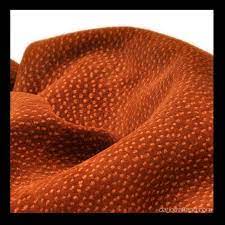Capybara hide, is often referred to as carpincho leather. In Argentina, however, it is referred to as Capybara, sometimes spelled Capibara.
The Distinctive Qualities of Carpincho Hide
Carpincho leather comes from the capybara (Hydrochoerus hydrochaeris), the largest rodent in the world, native to South America. This exotic material is prized for its softness, durability, and unique texture, setting it apart from other leathers. Unlike peccary leather, carpincho hide features clusters of bristle pores, typically grouped in bundles of 5-6, forming a distinctive speckled pattern.
Texture & Color Variations
Carpincho leather offers a rugged yet soft texture, creating a balance of durability and flexibility. Its natural grain, punctuated by bristle pore clusters, gives it an unmistakable appearance. Artisans often process it in earthy tones like oxide or rust brown, though deeper shades—including dark brown, saddle brown, navy blue, and black—are also available. Natural imperfections, including scars, contribute to its authenticity, ensuring that no two pieces are identical.
Cultural Significance & Luxury Appeal
In Argentina, carpincho leather holds deep cultural roots, particularly among gauchos, who use it for crafting gloves, belts, and boots. Traditionally, these items were valued not just for their practicality, but also for their connection to Argentina’s heritage of skilled leather craftsmanship. Today, global luxury designers emphasize its natural markings and texture, using these elements to create refined, timeless accessories such as wallets, handbags, and shoes.
Ethical Sourcing & Sustainability
Capybara leather production follows strict regulations to ensure ethical and sustainable practices. Certified farm-raised hides provide a responsible source while supporting local economies and conservation efforts. By prioritizing ethical sourcing, the industry ensures that demand for this unique material does not compromise environmental responsibility. Additionally, artisans continue to refine tanning processes to minimize environmental impact, ensuring that carpincho leather remains a sustainable option for luxury goods.






